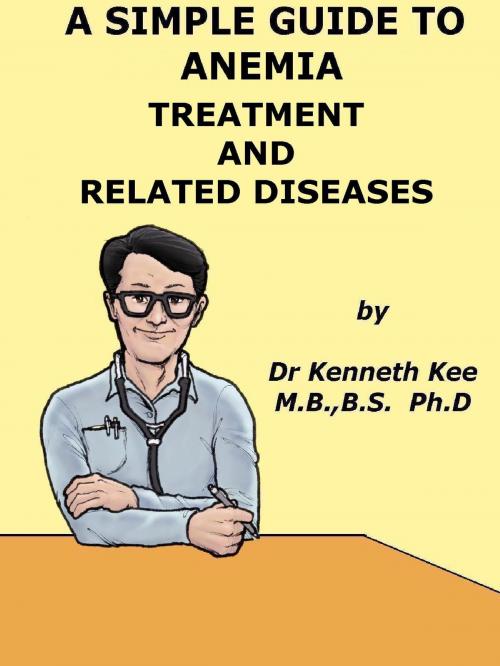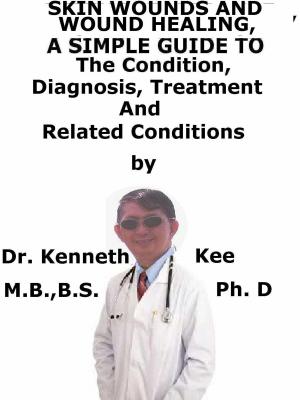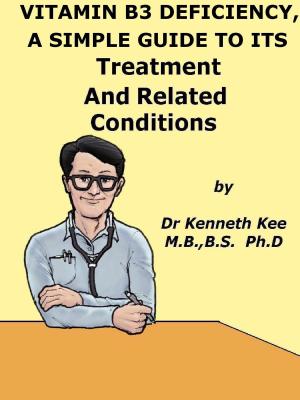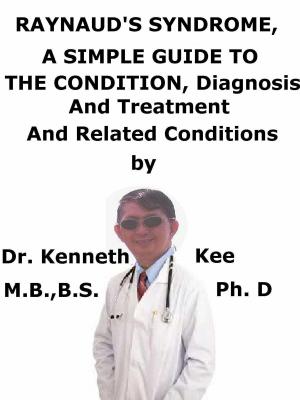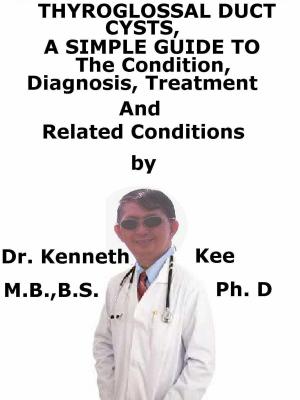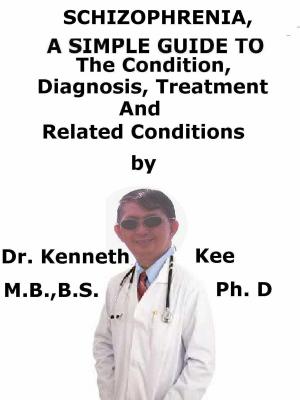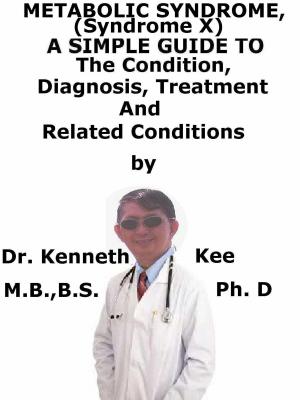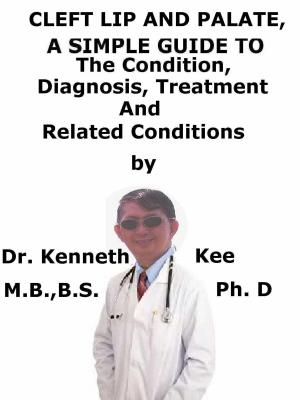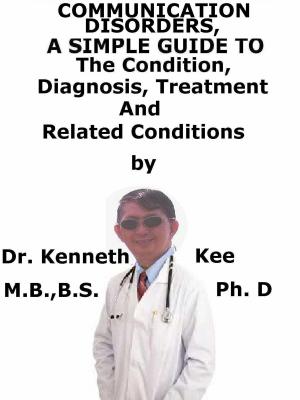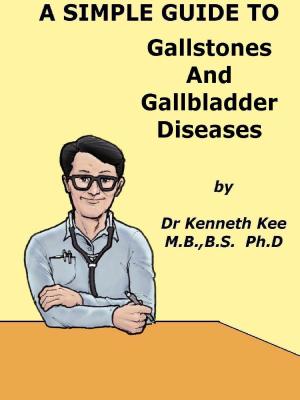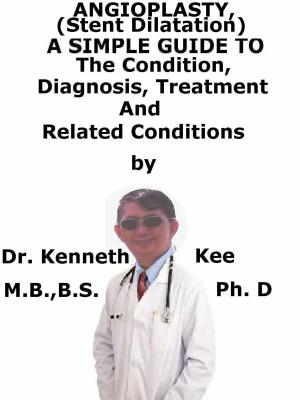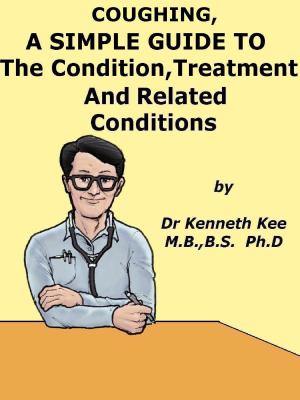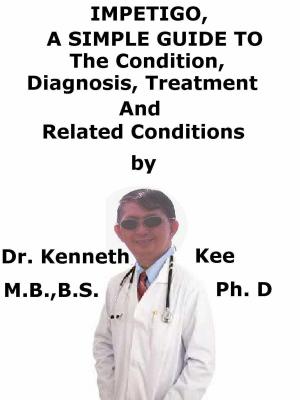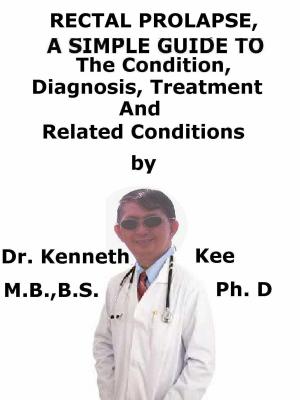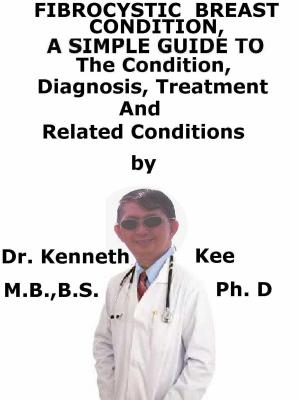A Simple Guide to Anemia, Treatment and Related Diseases
Nonfiction, Health & Well Being, Medical, Specialties, Internal Medicine, Hematology, General| Author: | Kenneth Kee | ISBN: | 9781311297877 |
| Publisher: | Kenneth Kee | Publication: | May 25, 2014 |
| Imprint: | Smashwords Edition | Language: | English |
| Author: | Kenneth Kee |
| ISBN: | 9781311297877 |
| Publisher: | Kenneth Kee |
| Publication: | May 25, 2014 |
| Imprint: | Smashwords Edition |
| Language: | English |
Introduction
Ode To Anemia
Anemia you cause me to look pale
The pallor is in my skin, mouth and nail
The reason is either fewer red blood cells
Or too little hemoglobin present in RBC shells
The hemoglobin gives the RBC their red color
With less hemoglobin in the cell comes the pallor
Hemoglobin also carries oxygen to my body and brain
Without the oxygen in my cells I will feel drained
There may be difficulty in breathing
The heart rate may be fast and racing
Brain confusion, lethargy and giddiness
There will be also muscle weakness
Bleeding too much in the menses or elsewhere
May also cause anemia, as can breakdown of RBC everyday
Treatment is by good healthy diet with iron and vitamins
Replacement of blood may be necessary for bleeding within
-An original poem by Kenneth Kee
Interesting Tips about the Anemia
A Healthy Lifestyle
1. Take a well Balanced Diet
2. Eat a well-balanced diet that includes good sources of
a. Iron (liver, meat, peas, beans, whole grain),
b. Vitamin B12 (foods of animal origin only, including meats, liver and kidney, milk, cheese, fish, shell fish and eggs)
c. Folic acid (present in most vegetables).
d. Vitamin C can make the stomach more acidic and can improve the absorption of iron in the diet.
Reduce the consumption of caffeine products and tea as they can decrease the absorption of iron.
Antibiotics to treat infections
Hormones to treat heavy menstrual bleeding in teenaged and adult women
A man-made version of erythropoietin to stimulate your body to make more red blood cells
3. Keep bones and body strong
Bone marrow produces our blood
Eat foods rich in calcium like yogurt, cheese, milk, and dark green vegetables.
Eat foods rich in Vitamin D, like eggs, fatty fish, cereal, and fortified milk.
Eat food rich in Vitamins B and C such as green vegetables and fruits
Zinc and other minerals are important to the body
4. Get enough rest and Sleep
Avoid stress and tension
5. Exercise and stay active.
It is best to do weight-bearing exercise such as walking, jogging, stair climbing, dancing, or lifting weights for 2½ hours a week.
One way to do this is to be active 30 minutes a day at least 5 days a week.
Begin slowly especially if a person has not been active.
6. Do not drink more than 2 alcohol drinks a day for a man or 1 alcohol drink a day for a woman.
Alcohol use also increases the chance of falling and breaking a bone.
Alcohol can affect the neurons and brain cells.
7. Stop or do not begin smoking.
It also interferes with blood supply and healing.
Cigarettes contain more than forty types of hazardous and possibly cancer causing chemicals which can harm the smokers and those around them.
Chapter 1
Anemia
What is Anemia?
Anemia is a blood condition in which the hemoglobin is lower than the average value of a normal person or the red blood cells is fewer than normal
When there are not enough red blood cells or there is too little hemoglobin, the blood is not able to carry enough oxygen to all parts of the body.
The Hemoglobin is the red chemical in red blood cell which carries oxygen around our bodies.
What are the types of Anemia?
There are several forms of anemia:
1. Iron deficiency anemia,
2. Hemolytic anemia,
3. Vitamin B-12 deficiency anemia,
4. Folic acid deficiency anemia,
5. Anemia caused by inherited abnormalities of RBCs (sickle cell anemia and thalassemia)
6. Anemia caused by chronic (ongoing) disease, such as rheumatoid arthritis.
The most common form of anemia results from not having enough iron in the blood.
Iron is the main component of hemoglobin. Iron deficiency anemia may be caused by a lack of iron in the diet or a loss of blood.
TABLE OF CONTENT
Introduction
Chapter 1 Anemia
Chapter 2 Interesting Facts about Anemia
Chapter 3 Treatment of Anemia
Chapter 4 Iron Deficiency Anemia
Chapter 5 Hemolytic Anemia
Chapter 6 Aplastic Anemia
Chapter 7 Thalassemia
Chapter 8 Pernicious Anemia
Epilogue
Introduction
Ode To Anemia
Anemia you cause me to look pale
The pallor is in my skin, mouth and nail
The reason is either fewer red blood cells
Or too little hemoglobin present in RBC shells
The hemoglobin gives the RBC their red color
With less hemoglobin in the cell comes the pallor
Hemoglobin also carries oxygen to my body and brain
Without the oxygen in my cells I will feel drained
There may be difficulty in breathing
The heart rate may be fast and racing
Brain confusion, lethargy and giddiness
There will be also muscle weakness
Bleeding too much in the menses or elsewhere
May also cause anemia, as can breakdown of RBC everyday
Treatment is by good healthy diet with iron and vitamins
Replacement of blood may be necessary for bleeding within
-An original poem by Kenneth Kee
Interesting Tips about the Anemia
A Healthy Lifestyle
1. Take a well Balanced Diet
2. Eat a well-balanced diet that includes good sources of
a. Iron (liver, meat, peas, beans, whole grain),
b. Vitamin B12 (foods of animal origin only, including meats, liver and kidney, milk, cheese, fish, shell fish and eggs)
c. Folic acid (present in most vegetables).
d. Vitamin C can make the stomach more acidic and can improve the absorption of iron in the diet.
Reduce the consumption of caffeine products and tea as they can decrease the absorption of iron.
Antibiotics to treat infections
Hormones to treat heavy menstrual bleeding in teenaged and adult women
A man-made version of erythropoietin to stimulate your body to make more red blood cells
3. Keep bones and body strong
Bone marrow produces our blood
Eat foods rich in calcium like yogurt, cheese, milk, and dark green vegetables.
Eat foods rich in Vitamin D, like eggs, fatty fish, cereal, and fortified milk.
Eat food rich in Vitamins B and C such as green vegetables and fruits
Zinc and other minerals are important to the body
4. Get enough rest and Sleep
Avoid stress and tension
5. Exercise and stay active.
It is best to do weight-bearing exercise such as walking, jogging, stair climbing, dancing, or lifting weights for 2½ hours a week.
One way to do this is to be active 30 minutes a day at least 5 days a week.
Begin slowly especially if a person has not been active.
6. Do not drink more than 2 alcohol drinks a day for a man or 1 alcohol drink a day for a woman.
Alcohol use also increases the chance of falling and breaking a bone.
Alcohol can affect the neurons and brain cells.
7. Stop or do not begin smoking.
It also interferes with blood supply and healing.
Cigarettes contain more than forty types of hazardous and possibly cancer causing chemicals which can harm the smokers and those around them.
Chapter 1
Anemia
What is Anemia?
Anemia is a blood condition in which the hemoglobin is lower than the average value of a normal person or the red blood cells is fewer than normal
When there are not enough red blood cells or there is too little hemoglobin, the blood is not able to carry enough oxygen to all parts of the body.
The Hemoglobin is the red chemical in red blood cell which carries oxygen around our bodies.
What are the types of Anemia?
There are several forms of anemia:
1. Iron deficiency anemia,
2. Hemolytic anemia,
3. Vitamin B-12 deficiency anemia,
4. Folic acid deficiency anemia,
5. Anemia caused by inherited abnormalities of RBCs (sickle cell anemia and thalassemia)
6. Anemia caused by chronic (ongoing) disease, such as rheumatoid arthritis.
The most common form of anemia results from not having enough iron in the blood.
Iron is the main component of hemoglobin. Iron deficiency anemia may be caused by a lack of iron in the diet or a loss of blood.
TABLE OF CONTENT
Introduction
Chapter 1 Anemia
Chapter 2 Interesting Facts about Anemia
Chapter 3 Treatment of Anemia
Chapter 4 Iron Deficiency Anemia
Chapter 5 Hemolytic Anemia
Chapter 6 Aplastic Anemia
Chapter 7 Thalassemia
Chapter 8 Pernicious Anemia
Epilogue
